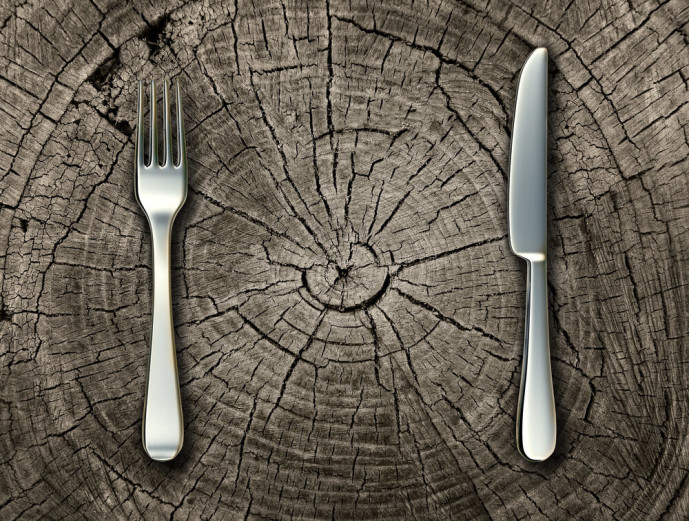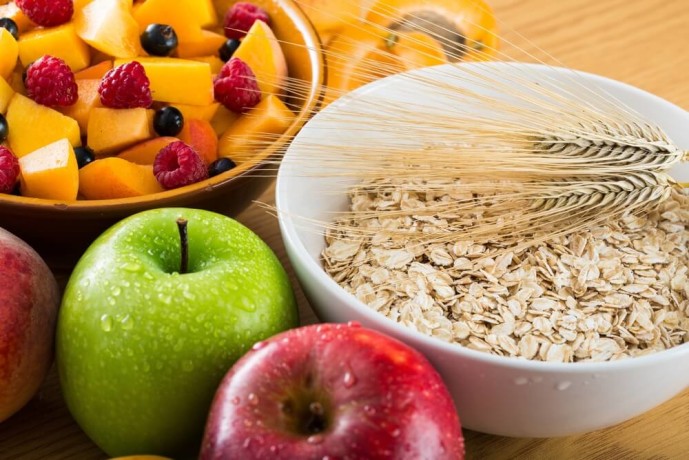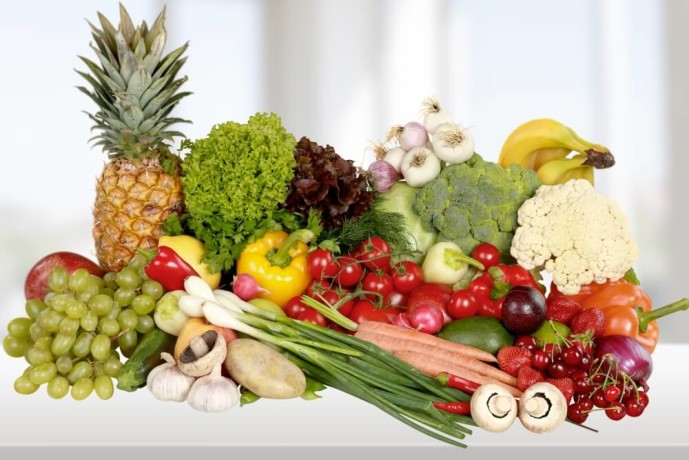
Are you getting enough fiber? Do you really know what fiber is and what it does for your body?
When you think of your diet, what pops into your head? Probably thinks like getting enough protein, making sure you’re eating enough veggies and fruit, not indulging too much. But how often do people think about fiber?
Not often enough.
After all, do you know exactly how much fiber you’re getting in a day, versus how much you’re supposed to be getting in a day?
How about the source of that fiber? Where is it coming from? Should you be getting more? Or less? Just how important is it and what are the healthiest ways to get it?
Dietary fiber isn’t exactly the most well-understood thing when it comes to weight loss and your diet. After all, it isn’t advertised as the kind of thing that’s going to help you lose weight or stay healthy. But the truth is, it plays a lot a lot bigger role than some people think it does.
In fact, some people don’t even know what fiber is. And if you’re one of those people, don’t sweat, we’re going to cover it all, starting with the very basics – what the heck fiber is.
What Is Dietary Fiber?
Fiber is a type of carb that isn’t digestible. It can be found in countless foods you probably eat every day, from things like fruits and veggies to legumes and grains. And fiber isn’t just fiber – it comes in two different forms.
One of those forms is soluble fiber. This can be dissolved in water and what it does is this – it slows down the movement of food as it goes through your digestive track.
A lot of research has shown that soluble fiber actually gets metabolized through bacteria found in the colon. Therefore, it doesn’t really have a ton of effect on stool weight. But this is why we mentioned it – it does have some good benefits.
One of those benefits is kind of major. Soluble fiber actually increases fecal output amount by stimulating growth of both fatty acids and healthy bacteria. Insoluble fuel also happens to be an awesome source of fuel for colons.
Soluble fiber is found in a wide range of foods, like oats, beans and peas. It’s also in certain types of fruits, like apples, bananas and plums and specific type of nuts, like nuts. Some veggies have it too, like sweet potatoes, carrots and broccoli.
The second form of fiber in – yep, you guessed it –insoluble fiber. Now, this other kind of fiber isn’t able to dissolve in water, but this is the type that contributes to stool weight. This is the kind of fiber that clings to the wall of the intestines, and essentially causes damage. However, there’s plenty of research that shows the damage, followed by the repair and then regeneration of cells is actually a healthy process. We know this may seem a little odd but it’s true.
Insoluble fiber comes in a lot of different foods, like barley, brown rice, and wheat bran and beans. It’s also found in some veggies, like cauliflower, green beans and peas. Some fruits have it too, like kiwis, tomatoes, plums and grapes.
What Does Fiber Actually Do for Your Body?
The known importance of getting enough fiber in your diet isn’t exactly a new concept. In fact, this goes back to ancient Greek times, when Hippocrates recommended that everyone should eat whole-grain breads in order to help with bowel movements.
Okay, so we get it – a lot of food has fiber. But what exactly does fiber help with?
Well doctors are always telling us that diets high in fiber cut down on your risk of colon cancer. Now, this advice was based on small studies. And recently, bigger and more-solid studies have come out with more results.
Harvard University watched 80,000 nurses for 16 years and found that dietary fiber isn’t that strongly linked with a reduce risk for both colon cancer and polyps, which are the precursor for colon cancer.
Let’s take a look at another study done by Harvard researchers. They decided to combine, along with countless other studies, and pool all their information together. So this was 20 years worth of information on about 700,000 men and women. What they found – high fiber intake didn’t protect them against colon cancer.
So that’s the not-so great news. The better news is that fiber does seem to help cut our risk for other kinds of cancer.
The Institute of Social and Preventive Medicine, located in Switzerland, discovered that fiber found in whole grains can actually reduce the risk of throat and mouth cancer. Refined grains, however, showed no kind of connection. Why? Because during the processing, the fiber is actually removed.
And, based on research done by Imperial College, getting enough fiber can also cut down the likelihood of developing breast cancer.
As most of us know, one of the leading causes of death in the US is heart disease. And studies have shown that getting enough fiber can help reduce your risk of heart disease. University of Minnesota analyzed 10 different studies in order to find out what the deal between fiber intake and heart disease is. The researchers discovered that just increasing daily fiber intake by 10 grams decreased heart disease by about 14%. There was also a 27% in having death from heart disease.
Harvard jumped in on this one, too. After keeping an eye on 43,757 men for six years, they saw that when these men increased their intake of fiber, their heart disease risk actually decreased.
The University also discovered that soluble fiber cuts down on LDL cholesterol levels (this is the bad cholesterol).
Metabolic syndrome might be a term you’ve heard in passing but aren’t sure what it meant. Basically, that’s where a bunch of different disorders combine, such as high insulin levels, high blood pressure, obesity, higher levels of triglycerides and low HDL levels. So obviously, it’s a pretty serious disease – and it’s generally marked as a disease that increases the chances of diabetes and heart disease.
Tufts University researchers showed that increasing intake of whole grains cuts down on the risk of developing this syndrome. What they found was that the magnesium and the fiber found in the whole grains were mostly the reasons for all the benefits.
High Fiber Diets Reduce Your Risk
Many studies have shown that dietary fiber helps keep blood sugar under control, while reducing bad cholesterol and blood pressure. Plus, fiber can prevent you from gaining weight and actually jumpstart your weight loss.
Fiber can also reduce your risk of developing type 2 diabetes, which is the most common type of diabetes. This is when your body isn’t able to product enough insulin in order to lower blood sugar levels. Now, these studies done on fiber and type 2 diabetes show that it can help decrease your risk because fiber helps your body not only produce insulin but also keep an eye on blood sugar levels.
On the flipside, however, having a diet that’s lower in fiber but higher in simple carbs (which are those carbs that are quickly absorbed by your body) has been proven to increase your likelihood of developing heart disease as well as type 2 diabetes.
Fiber also plays a role in that not-so-great diagnosis of diverticulitis. This is an intestinal inflammation and is actually one of the most common disorders in colons, especially in the Western area. It can be pretty painful and most affects those over the age of 45.
Harvard researchers had something to say about this as well. They decided to do a study that took an in-depth look at fiber and diverticulitis. And they certainly went all out – they looked at a total of 43,881 men! The researchers looked at their fiber intake. They discovered that those who were eating an appropriate amount of fiber, with a special emphasis on insoluble fiber, didn’t have as much of a risk at developing diverticulitis. In fact, that risk was cut down 40% just by the fiber alone, which is pretty impressive. And, if you’ve had diverticulitis pain before, you know exactly how much it sucks.
We’d say it’s pretty clear which way the arrows are pointing – make sure you get enough fiber. If you do, it’s a lot more likely you’re going to have a healthier, longer life. But the million dollar question is this: How much fiber should you be getting? How much is enough?
The Institute of Medicine is going to help us out with this one. They said that both children and adults should aim to consume about 14 grams of fiber. This is based on every 1,000 calories of food you eat in a day. So if you have 2,000 calories in a day, you’ll want to shoot for 28 grams of fiber to keep everything running smoothly.
 Getting Enough Fiber (Without Feeling Like You’re Eating Wood)
Getting Enough Fiber (Without Feeling Like You’re Eating Wood)
If you aren’t exactly sure how to do it, there are quite a few ways you can get your necessary intake of fiber. The easier – eat whole fruits instead of reaching for those bottles of fruit juice. A lot of these are packed with sugar anyway, so you’re going to feel good about making this switch. Next, pick whole grain breads, cereals, pasts and rice over their processed forms.
Cut back on snacking on things like energy bars, chips, pretzels and crackers. They’ll never have your back like veggies do when it comes to fiber. Peppers or celery will still give you that crunch factor without all the bad stuff.
Need help with healthy snacks?
If you have an apple with the peel, and it’s about a medium size, that’s 4 grams of fiber right there. However, if you have an apple without a peel (like in juice, so who knows what the heck else is added in there), that cuts the fiber down to 2.1 grams, so you would have to have double the amount to get it back to where it stands with the peel.
[Tweet “Leave the peel on your apple for twice the fiber than without.”]
Or, if you go for the apple juice over the apple itself, it has about .25 grams of fiber for one cup! It’s amazing how much the fiber gets cut down. Same with apple sauce – ½ cup comes in at about 1.5 grams of fiber, not to mention the big dose of sugar that tends to come with the more popular brands.
Next, make sure you add enough legumes to your everyday diet. You can spice this up (no pun intended) by switching to different international dishes that focus on legumes and whole grains. A lot of middle-eastern and Indian cuisine has these two essential ingredients in them, so give it a try.
Quinoa is also a great way to get some fiber, with 5 grams of it packed into ½ cup. If you really want to get a good dose of fiber, head to your local grocery store and get some bran cereal. With 8.3 grams of fiber in 1/3 cup, it’s a really good dose.
A lot of fruits have a ton of fiber. Raspberries have about 8.4 grams in 1 cup, with ½ cup of stewed prunes has about 8 grams. Bananas have some fiber, somewhere around 2.8 grams for 1 medium-sized banana. Blackberries are a pretty good choice too, with 7.6 grams in 1 cup.
If you want to get your fiber through vegetables, surprisingly, artichokes come in first. One medium artichoke along has about 6.5 grams of fiber. Cooked winter squash as about 5.7 grams in one cup, followed by collard greens with 5.3 grams in 1 cup.
And, as you probably know, beans are also a great source of fiber. Canned red kidney beans come at 8.2 grams for ½ cup. Baked beans (everyone’s favorite) have about 7 grams for ½ cup, while canned navy beans are around 6.7 grams for ½ cup.
Conclusion
Now that you’re aware of fiber and how important it is, you will add it right to your list of things to check when you’re browsing ingredient labels. You’ll be pretty surprised at what foods you already eat that come packed with fiber – and what foods you thought had a decent amount, actually don’t.
-Terry Asher
Terry
Latest posts by Terry (see all)
- How Important Are Net Carbs For Building Huge Muscle? - Apr 28, 2017
- The Matt Damon Workout Explained - Apr 27, 2017
- Watercress – Benefits And The Best Way To Consume It - Apr 26, 2017















[…] washed of not only important nutrients, but these foods also do not have the same levels of fiber. Fiber clings to carbs and other foods and helps your body pass them easier. You’ll also feel fuller, […]
[…] without the foods clinging inside of your digestive system. Second, with this particular kind of fiber, it helps keep you feeling fuller, […]
[…] without the foods clinging inside of your digestive system. Second, with this particular kind of fiber, it helps keep you feeling fuller, […]
[…] high-fiber diet is good for this as well. Eating foods that are high in fiber will help prevent some carbs, […]
[…] hemorrhoids as well as small pouches found in the colon (known as diverticula disease). A high fiber diet will help in lowering our cholesterol, it helps control your blood sugar levels, and it can also […]
[…] hemorrhoids as well as small pouches found in the colon (known as diverticula disease). A high fiber diet will help in lowering our cholesterol, it helps control your blood sugar levels, and it can also […]
[…] hemorrhoids as well as small pouches found in the colon (known as diverticula disease). A high fiber diet will help in lowering our cholesterol, it helps control your blood sugar levels, and it can also […]
[…] hemorrhoids as well as small pouches found in the colon (known as diverticula disease). A high fiber diet will help in lowering our cholesterol, it helps control your blood sugar levels, and it can also […]
[…] high-fiber diet is good for this as well. Eating foods that are high in fiber will help prevent some carbs, […]
[…] processes to heat regulation. Caloric estimators are still pretty accurate, but some foods—like high-fiber foods—aren’t digested as […]
[…] spending two weeks on the Atkins 20 plan, dieters are allowed to add nuts, berries, and other fiber-rich carbohydrate sources into their plan. Carbs are increased in five-net-carb increments, gradually opening the […]
[…] spending two weeks on the Atkins 20 plan, dieters are allowed to add nuts, berries, and other fiber-rich carbohydrate sources into their plan. Carbs are increased in five-net-carb increments, gradually opening the […]
[…] spending two weeks on the Atkins 20 plan, dieters are allowed to add nuts, berries, and other fiber-rich carbohydrate sources into their plan. Carbs are increased in five-net-carb increments, gradually opening the […]
[…] spending two weeks on the Atkins 20 plan, dieters are allowed to add nuts, berries, and other fiber-rich carbohydrate sources into their plan. Carbs are increased in five-net-carb increments, gradually opening the […]
[…] spending two weeks on the Atkins 20 plan, dieters are allowed to add nuts, berries, and other fiber-rich carbohydrate sources into their plan. Carbs are increased in five-net-carb increments, gradually opening the […]
[…] you have soluble and insoluble fiber. Insoluble fiber is the stuff you get from bran flakes. It absorbs water and helps food make its way through your […]
[…] you have soluble and insoluble fiber. Insoluble fiber is the stuff you get from bran flakes. It absorbs water and helps food make its way through your […]
[…] way is to make it hard for the body to break down specific nutrients like protein and fiber. Scientists refer to this as diet-induced thermogenesis or thermic effect, where the body uses a […]
[…] fact, CBD vapes let your body absorb between 34% and 46% of cannabinoids. Your digestive tract will limit how much bioavailable your body can […]
[…] fact, CBD vapes let your body absorb between 34% and 46% of cannabinoids. Your digestive tract will limit how much bioavailable your body can […]
[…] fact, CBD vapes let your body absorb between 34% and 46% of cannabinoids. Your digestive tract will limit how much bioavailable your body can […]
[…] fact, CBD vapes let your body absorb between 34% and 46% of cannabinoids. Your digestive tract will limit how much bioavailable your body can […]